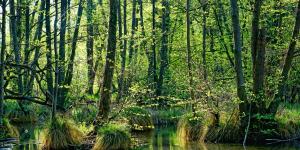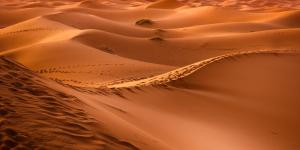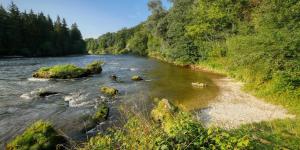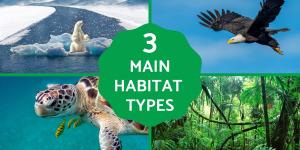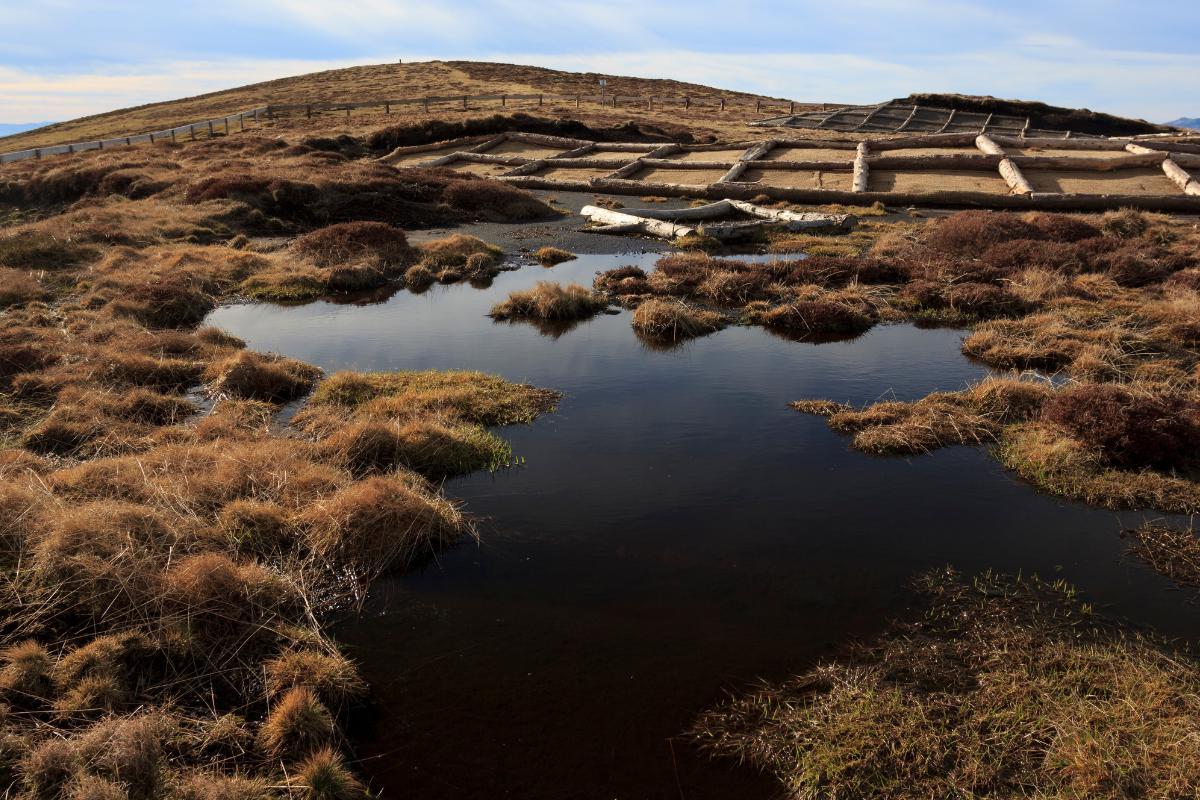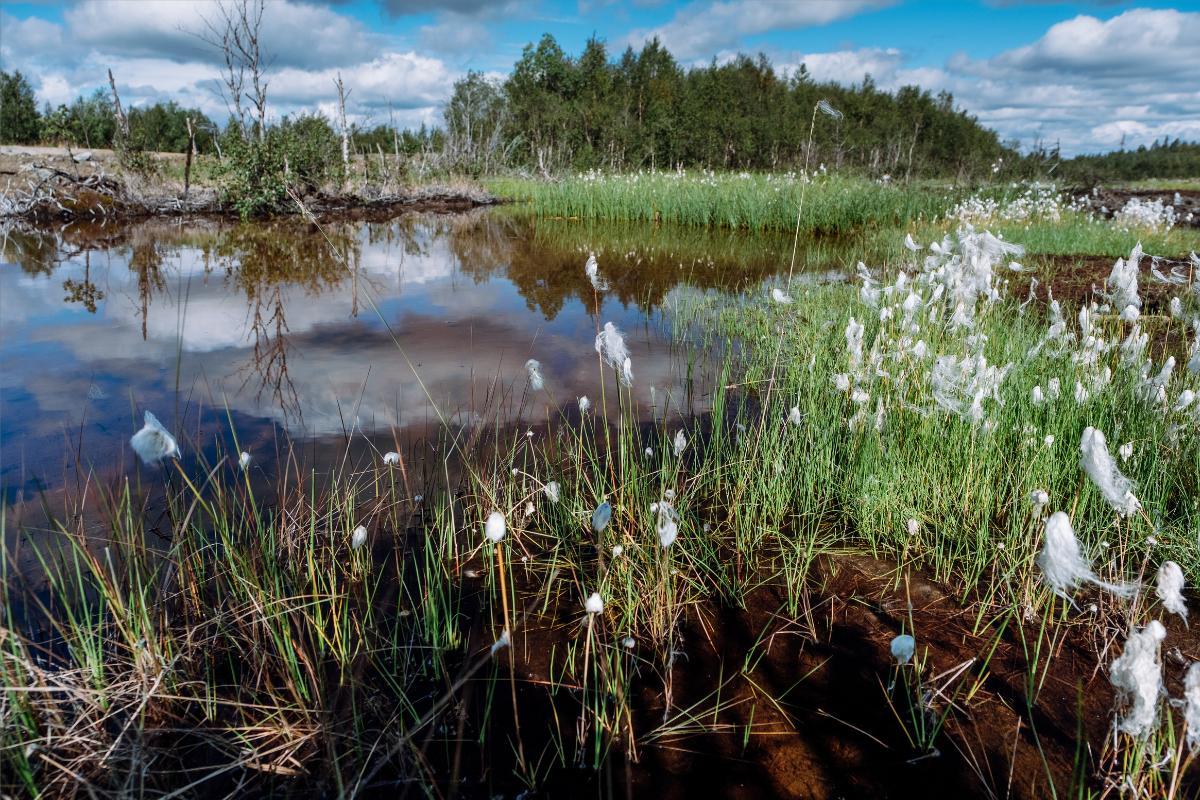What Are Peatlands? - Types and Uses


Peatlands are a type of wetland which contain peat, a substance made from accumulated partially decomposed organic matter. When this peat reaches a certain standard, it can be used for fuel. Peatlands can be found in approximately 180 countries, in different climatic zones. Peat in its moist state serves to accumulate carbon. They contain so much carbon that they are the most carbon-per-unit area in the world. This makes them very important for various uses. Peatlands are also very diverse, containing different types of peat-accumulating ecosystems.
At thedailyECO, we discover more by asking what are peatlands? We provide the definition and uses of peatbogs and other types of peatlands, as well as how they are formed.
What are peatlands?
The broad definition of peatlands is that they are a type of acidic wetland in which peat accumulates. Peat is the accumulation of partially decomposed organic material in a water-saturated environment. It requires humid ecosystems which are created in peatlands to form.
Peat is mainly composed of plant remains, such as mosses, reeds, shrubs and trees. Due to the lack of oxygen in water-saturated soil, this organic matter decomposes very slowly. Peatlands are commonly found in areas with high water content, such as swamps, bogs and marshes.
Learn more about these other types of wetlands with our guide to what is a marsh?
Characteristics of peatlands
To provide a more comprehensive definition of what are peatlands, we need to look at their different characteristics. These are the factors by which we can consider them peatlands as opposed to other types of wetlands and they include:
- Peat accumulation: the most distinctive feature of peat bogs is the accumulation of peat, a type of partially decomposed organic material. Peat builds up in layers in the soil as dead plants and other organic materials accumulate in a water-saturated environment.
- Water-saturated soil: peatlands typically have a high water table, meaning the soil is saturated with water most of the time. This creates anaerobic (oxygen-free) conditions that slow the decomposition of organic materials, allowing peat to build up.
- Characteristic vegetation: peat bogs are usually dominated by plants adapted to humid and acidic environments. This includes mosses, sedges, peat mosses, heaths and sometimes trees such as bog pine (Pinus mugo) and bog willow (Salix pedicellaris).
- Acidity: peatlands typically have an acidic pH due to the release of organic acids during the slow decomposition of organic matter. This acidity is a distinctive characteristic of peatlands.
- Carbon storage: peatlands act as carbon sinks, storing large amounts of carbon in the form of peat. The accumulation of carbon in peatlands contributes to climate change mitigation by preventing carbon from being released into the atmosphere.
- Wildlife habitat: peatlands are important habitats for a variety of plant and animal species adapted to the unique conditions of these wet, acidic ecosystems. They can house birds, insects, amphibians and other forms of life.
- Water regulation: peatlands also play a role in water regulation, helping to control water flow, reduce flooding and improve water quality.
- Sensitivity to degradation: peatlands are fragile ecosystems and can be vulnerable to degradation due to human activities, such as drainage for agriculture or development, peat extraction, pollution and tree felling.
Did you know that carbon is the determining factor in whether a compound is organic? Learn more with the difference between organic and inorganic compounds.

How peat bogs are formed
The formation of peatlands occurs over long periods of time. Such a length of time is required for the process of organic material accumulation in a water-saturated environment. Below are the key stages in the formation of a peat bog:
- Start: the process begins in areas with high rainfall or water table, such as swampy areas, swamps or marshes. The dominant vegetation in these areas usually consists of mosses, reeds and other types of plants adapted to humid environments.
- Accumulation of organic material: over time, plants and other organic materials begin to accumulate in the soil. Dead plant parts, such as leaves, stems and roots, fall to the ground and accumulate in layers.
- Slow decomposition: the decomposition of these organic materials is very slow due to the saturation of the soil with water and the lack of oxygen in the lower layers of the soil. This anaerobic condition slows down the microbial decomposition of organic materials.
- Peat formation: over time, the accumulation of organic material leads to the formation of a layer of peat. Peat is a spongy, carbon-rich material consisting of partially decomposed organic materials.
- Continuous growth: peatlands continue to grow slowly as plants die and decompose, adding more layers of peat over time. This process can take centuries or even millennia.
- Vegetation evolution: as peat accumulates, the composition of the vegetation may change. In some cases, trees such as bog pine (Pinus mugo) may become established in the peat bog.
- Acidic characteristics: peatlands tend to have an acidic pH due to the release of organic acids during the slow decomposition of organic matter.
- Wildlife habitat: over time, peatlands become important habitats for various forms of wildlife adapted to these unique conditions, including birds, insects, amphibians and peat-specific plants.
Types of peatlands
As we have already stated, there are several types of peatlands. Each has distinct characteristics and ecological features. Here are some of the main types of peatlands:
- Bogs (peatbogs): bogs are characterized by acidic, nutrient-poor conditions. They are often dominated by sphagnum mosses and have a surface layer of living sphagnum moss underlain by layers of peat.
- Fen: unlike bogs, fens have a water source rich in nutrients, usually from groundwater or surface water. Fens are less acidic than bogs and can support a more diverse plant community. Learn more with how groundwater is stored with our article on types of aquifers.
- Mire: this is a general term that includes bogs and fens, but is often used to describe peatlands that are not clearly one or the other.
- Swamp: peat swamps are peatlands with woody vegetation, such as trees and shrubs. They often have more oxygen-rich conditions and are not dominated by peat accumulation like peatbogs and other types of peatlands. Learn more by considering the difference between a lake and a swamp.
- Blanket bog: blanket bogs are extensive, flat peatlands that cover large areas, often on plateaus and uplands. They play an essential role in carbon storage.
- Raised bog: these bogs have domed, raised surfaces and are formed over time by the accumulation of peat. Raised bogs often have a central core of actively growing peat.
- Palsa: a palsa is a type of peatland found in cold regions, typically in permafrost areas. It features elevated peat mounds with vegetation.
- Quaking bog: as the name suggests, quaking bogs have a water-saturated, unstable surface layer of peat. They often experience a ‘quaking’ effect when walked upon.
- Cataract bog: these peatlands occur at waterfalls or cataracts and are often influenced by high water flow.
These are just some of the types of peatlands that can be found in the world's various wetland ecosystems. Variations can occur depending on local conditions and geography. Each type of peatland has unique characteristics, vegetation and ecological functions.
Plants and animals found in peatlands
Peatlands are unique ecosystems that host a variety of plants and animals. The types of peatland flora and fauna that can be found will be those adapted to the specific conditions of these wetland environments. Here are some typical examples:
Examples of peatland plants
- Sphagnum moss: as already mentioned, sphagnum species are often dominant in peatlands. They create the acidic, waterlogged conditions that characterize these environments.
- Cotton grass: cotton grasses are common in many peatlands and are well-adapted to the wet conditions.
- Bog rosemary: this shrub is often found in acidic bogs and heathlands, producing small, pink flowers.
- Pitcher plants: carnivorous pitcher plants thrive in nutrient-poor peatlands. They attract and trap insects for nutrients.
- Sun dew: another carnivorous plant, the sundew, captures insects with sticky glands on its leaves.
- Bog heather: heather species are adapted to acidic, nutrient-poor soils and are found in some peatlands.
Examples of peatland animals
- Bog turtle: the bog turtle (Glyptemys muhlenbergii) is one of the rarest turtle species in North America and is often associated with peatlands.
- Dragonflies and damselflies: these insects are common around peatland areas, especially in the summer when they breed in the water. Learn about whether dragonflies bite or sting.
- Migratory birds: many species of migratory birds use peatlands as breeding or stopover sites during their long-distance journeys.
- Common lizard: in some peatlands, reptiles like the common lizard (Zootoca vivipara) can be found, particularly in the surrounding areas.
- Frogs and toads: amphibians such as frogs and toads may inhabit peatland environments, as the wet conditions are suitable for breeding.
- Salamanders: some species of salamander are well adapted to the moist, forested areas around peatlands.
- Insectivorous birds: birds that feed on insects, such as warblers and flycatchers, are attracted to the abundance of insects around peatlands.
- Mammals: some larger mammals may visit peatlands for drinking or foraging, though they are not exclusive to these habitats.
It's important to note that the specific plant and animal species in peatlands can vary depending on the location, climate and the type of peatland (e.g., bogs, fens or swamps). Additionally, peatlands provide important habitat for various wildlife and are essential for many migratory species.

What are peat bogs used for?
Peatlands are unique ecosystems and play an important role in the carbon cycle. The accumulation of peat in peatlands acts as a carbon sink, as carbon from dead plants is stored in the soil rather than being released into the atmosphere. Due to their ability to sequester carbon, peatlands play an important role in climate change mitigation.
Additionally, peatlands are important habitats for biodiversity. They are home to a variety of plant and animal species adapted to the unique conditions of these humid, acidic environments. They also provide ecosystem services, such as water regulation and improving water quality by acting as natural filters.
Are peatlands still used for fuel?
Peat is harvested from peatlands including peat bogs. It has historically been used as a source of fuel in some regions. However, its use as a fuel source has decreased over the years due to environmental concerns, as peat harvesting and burning can release carbon dioxide into the atmosphere and contribute to greenhouse gas emissions.
Many countries have shifted away from using peat as a fuel source and have adopted more sustainable and environmentally friendly alternatives, such as natural gas. Others have adapted to more renewable energy sources like wind, solar and hydroelectric power.
In some regions, particularly in parts of Ireland and Scotland, there is still limited use of peat as a fuel source, but its use is generally diminishing. There is a growing focus on conserving peatlands for their ecological, environmental and carbon storage benefits. Many peatlands are now protected or managed to preserve their unique ecosystems and reduce carbon emissions.

If you want to read similar articles to What Are Peatlands? - Types and Uses, we recommend you visit our Ecosystems category.

